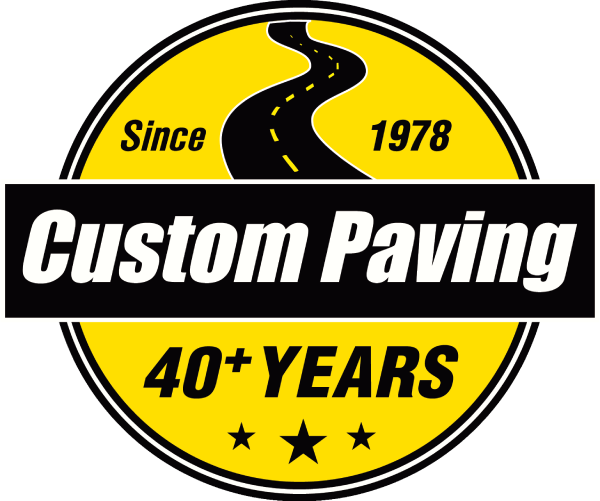Q: I just had my new driveway, parking lot, roadway, etc. installed, what can I expect?
Congratulations on your new asphalt! Very few things beautify your home or place of business like new asphalt. However in order to keep your new asphalt looking great there are a few things to remember.
A term also used for asphalt is hot mix because it is exactly that, HOT. Fresh asphalt that has just been installed can stay hot for several hours after installation, especially during summer months. For this reason it is best to avoid driving on your new asphalt for 24 hours and avoid parking on it for 72 hours.
Due to the nature of asphalt it is very common for new asphalt to get scuffed by sharp turns or turning your vehicle wheels while sitting still. While we recommend you be very cautious with your sharp turns it is almost impossible to avoid. HOWEVER in almost every case these "scuff" marks are only superficial and will wear back in with typical drive traffic. During the summer months your new asphalt will be most vulnerable, as the temperatures are much higher. If you wish you can cool the surface by running water on the asphalt on extremely hot days. After the first 12 months the chances of this happening are greatly reduced.
One of the reasons asphalt holds up to our harsh winters is due to its pliability. As the ground freezes and thaws, your asphalt also heaves and settles. Asphalt is able to raise and settle to follow the ground conditions. While this is a major benefit in extending its lifetime it also has some minor side effects. You'll want to avoid parking any large or heavy trucks on your new asphalt as it may cause depressions. Kick stands, car jacks, lawn chairs etc may also cause indentations into your new asphalt. If you must use any of these it's best to place something underneath them to avoid scarring the pavement. Also it's not uncommon to notice some "hairline" fractures around these heave spots, after a harsh winter.
Plowing your asphalt for the first time will be one of the most rewarding experiences you'll have with your new driveway, parking lot, etc. Gone are the days of trying to avoid digging up the gravel, and no more raking rocks out of the yard every spring! When it comes to plowing your asphalt the only tip we'll give is ENJOY IT! Typical plowing will cause no harm. Just be careful on your edges.
The weakest point of your asphalt is your edges. You'll want to make sure you keep your edges supported as much as possible. Typically black dirt is placed along the edges and grass is planted. Using gravel against the edge as a shoulder of support works great as well. However you should avoid driving on the edges as much as possible, ESPECIALLY WHEN NEW (typically 6-12 months).
Avoid spilling gas/oil/hydraulic fluid/fuel oil, or any other abrasive materials on your asphalt. These materials eat at the asphalt and will cause it to deteriorate in those areas. Sealing your asphalt will provide a protective coating that helps resist the damaging effects of abrasive materials.
Sealing your asphalt will add years to its lifetime as well as beautify and protect it. We recommend sealing with a prime seal if sealing within the first year and then sealing every 3-5 years after the first year. NEVER LET ANOTHER COMPANY SEAL YOUR ASPHALT BEFORE YOUR WARRANTY IS UP. THIS WILL VOID YOUR WARRANTY!
It is possible (though very rare) that some customers can experience vegetation growth in their new asphalt. Being that no two job sites are the same, some sites are more at risk than others. This is not a poor reflection of the quality of the materials, nor the installation process. While we make every effort to prevent this from happening, sometimes nature can't be beat. If you notice what appears to be a little mound forming in your asphalt, immediately apply a weed killer to this area. As the weed dies the mound will begin to fall. A hand tamp or other means of compaction can be used to flatten this area back out after the weed killer has been applied.
